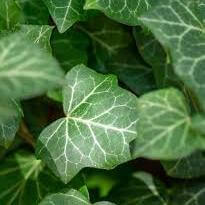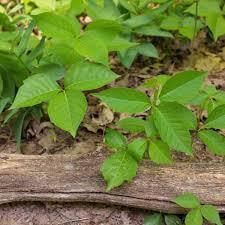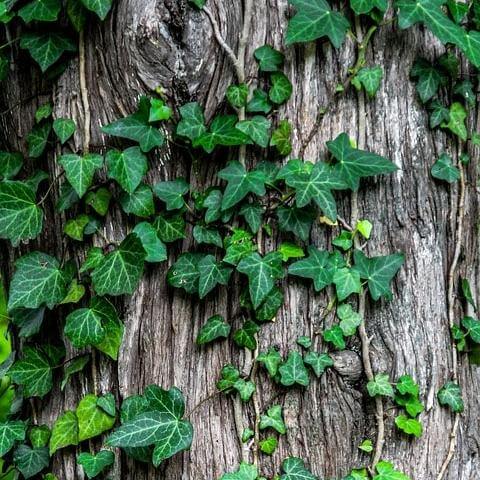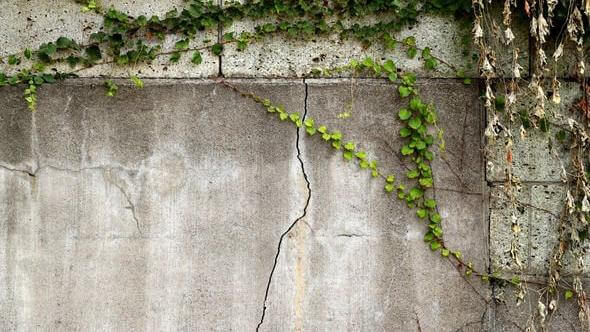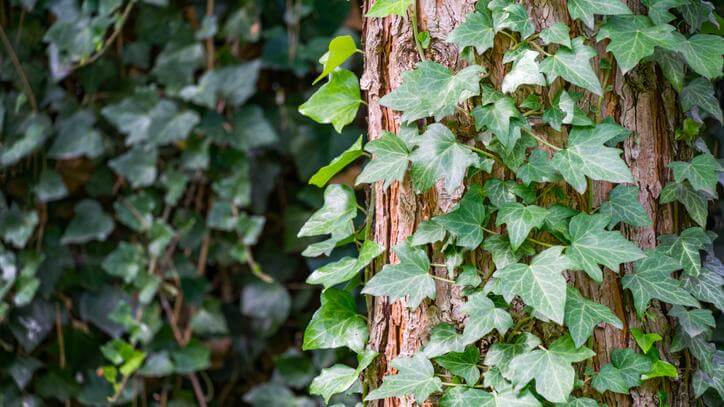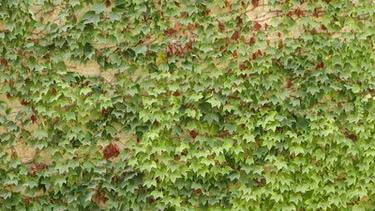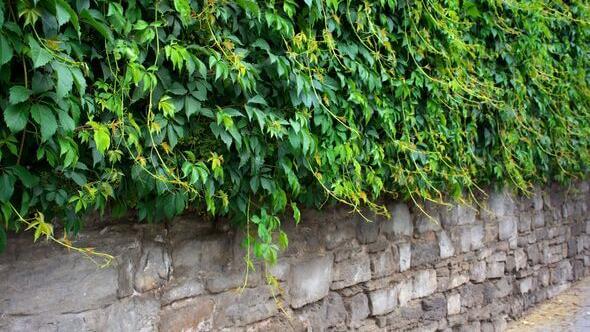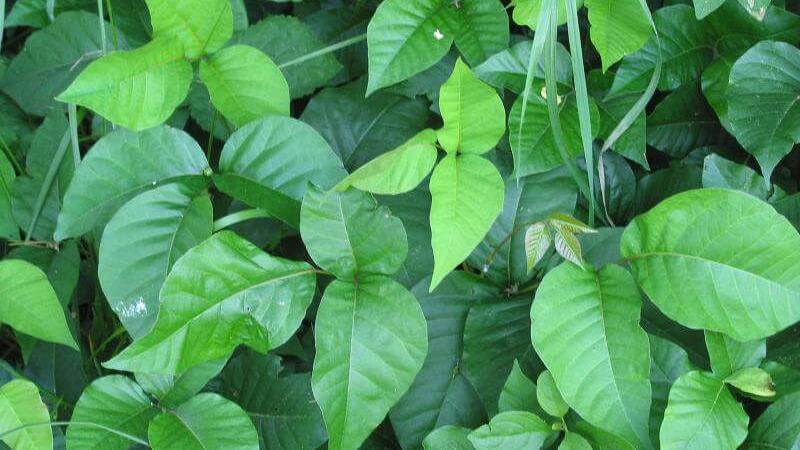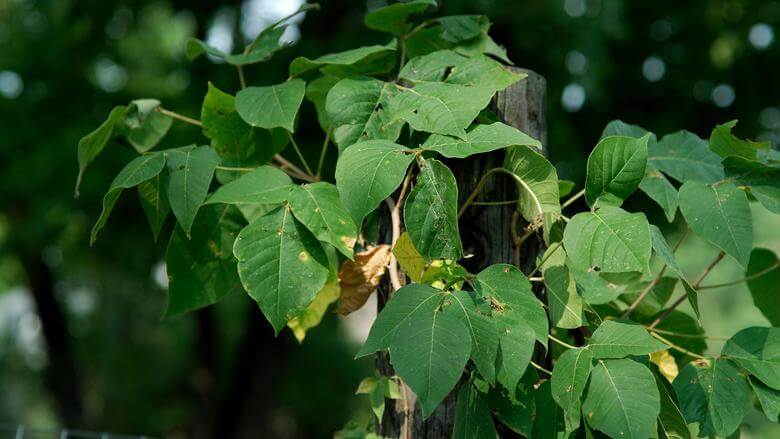Will Glyphosate Kill Ivy?
A Comprehensive Guide to Using Glyphosate for Ivy Control
Ivy, particularly English ivy (Hedera helix), is a hardy and invasive plant that can quickly take over gardens, landscapes, and even buildings if left unchecked. As a widespread weed, it’s often challenging to eradicate due to its resilient root system and ability to spread through vines and aerial roots. When battling ivy, many homeowners and landscapers turn to glyphosate, one of the most commonly used herbicides, to tackle this persistent plant.
But will glyphosate kill ivy? In short, yes, glyphosate can kill ivy, but it’s important to understand how to use it effectively. This guide will walk you through everything you need to know about using glyphosate to control ivy, the best application techniques, and what factors you need to consider to achieve successful ivy removal.
Understanding Glyphosate and Its Effectiveness on Ivy
Glyphosate is a systemic herbicide that works by being absorbed through the leaves of plants, where it travels through the plant’s vascular system to the roots. It interferes with key biochemical processes that are necessary for the plant’s survival, ultimately causing the plant to die. While glyphosate is effective on many types of weeds, its success with ivy depends on several factors, including the timing of application, ivy’s growth stage, and whether it’s a vigorous or well-established infestation.
Ivy, particularly English ivy, has a robust root system and spreads through both vines and aerial roots, making it a particularly stubborn weed to control. Even though glyphosate can kill ivy, it is important to use the herbicide correctly to avoid wasting time, money, and effort.
How to Use Glyphosate to Kill Ivy
To maximize glyphosate’s effectiveness against ivy, here are the key factors to consider when applying it:
1. Timing Is Key: When Is the Best Time to Apply Glyphosate?
The best time to apply glyphosate to ivy is during its active growing season, usually in the spring and early fall. During these periods, the plant is in its most vigorous growth phase, and glyphosate is more effectively absorbed through the leaves and transported to the roots.
- Spring: As ivy begins to leaf out and the weather warms up, it becomes more receptive to herbicides.
- Fall: Ivy is actively storing nutrients for the winter, which means glyphosate is more likely to be absorbed and carried down to the roots, where it can cause the most damage.
Avoid applying glyphosate during extreme heat or freezing temperatures, as these conditions can reduce its effectiveness. Similarly, don’t apply it when the plant is dormant or in a stressed condition.
2. Proper Application Technique: How to Apply Glyphosate to Ivy
To ensure glyphosate effectively kills ivy, use the following application techniques:
- Cut Back Ivy: Before spraying, trim back the ivy vines and leaves to expose fresh, green growth. This allows the glyphosate to make better contact with the plant tissue.
- Spot Treatment: Apply the glyphosate directly to the ivy leaves using a sprayer or sponge. Avoid overspraying to prevent damaging nearby plants. Spot treatment is especially important if ivy is growing near desirable plants.
- Concentration Matters: Use the recommended concentration of glyphosate (usually 2-3% for most outdoor applications). If ivy is well-established, you may need to apply a stronger concentration or repeat the treatment.
After application, you should start seeing results in 7-14 days, with ivy showing signs of wilting, yellowing, and eventually dying. However, since ivy has a robust root system, multiple applications may be required, particularly if ivy is deeply entrenched or regrows after the first treatment.
3. Repeat Treatments and Patience
Ivy is notorious for its ability to regenerate from both roots and vines, so it may take several rounds of treatment before it’s completely eradicated. If you notice ivy beginning to sprout again after the initial treatment, reapply glyphosate to the new growth to ensure that it reaches the roots and kills the plant.
Will Glyphosate Kill Poison Ivy?
Many people ask, “Will glyphosate kill poison ivy?” The answer is yes — glyphosate is effective at killing poison ivy (Toxicodendron radicans) as well. Just like with regular ivy, glyphosate works by attacking the plant’s vascular system, preventing it from producing essential proteins, which leads to the death of the plant. Poison ivy’s vine structure and spreading nature make it a prime target for glyphosate treatment.
When controlling poison ivy, it’s essential to follow similar techniques to those used for ivy:
- Spray the leaves thoroughly, ensuring that the glyphosate is absorbed into the plant.
- Avoid skin contact with poison ivy, as it can cause allergic reactions. Wear gloves and protective clothing when handling or spraying glyphosate near poison ivy.
- Repeat treatments may be necessary, especially if the poison ivy is well-established.
Does Glyphosate Kill Poison Ivy? Yes, But with Some Considerations
Glyphosate does kill poison ivy, but it’s important to note that poison ivy can sometimes show resilience, particularly if the plant is healthy and well-established. As with regular ivy, you may need to perform multiple applications of glyphosate, especially if you notice regrowth. Also, like with any herbicide treatment, it’s essential to be patient and monitor the treated area for any new growth.
Additionally, if poison ivy is growing near other plants you wish to protect, take care to spot-treat the poison ivy, or use a shield or barrier to prevent glyphosate from reaching non-target plants.
Other Methods to Enhance Glyphosate Effectiveness
While glyphosate is highly effective against ivy, combining it with other physical methods can increase success, especially with large or dense ivy infestations:
- Manual Removal: After spraying glyphosate, pull up or dig out dead ivy vines and roots. This will prevent regrowth and further spread.
- Covering the Area: Once ivy is dead, consider covering the area with heavy-duty tarps or mulch to suppress any remaining seeds or roots.
- Cutting Back Regularly: Regularly cutting back new growth can also help manage ivy while waiting for glyphosate to take full effect.
Conclusion: Will Glyphosate Kill Ivy?
In conclusion, glyphosate is an effective herbicide for controlling both English ivy and poison ivy, provided it is used correctly. The key to success lies in timing, proper application techniques, and repeated treatments. As with any herbicide, ensure you follow the manufacturer’s guidelines for concentration and safety precautions. Glyphosate can kill ivy and poison ivy, but be prepared for multiple rounds of application to fully eradicate these stubborn plants.
If you’re struggling with ivy in your garden or landscape, glyphosate can be a reliable part of your weed control arsenal. Just remember to use it responsibly and in conjunction with other methods for the best long-term results.
A Comprehensive Guide to Using Glyphosate for Ivy Control
Ivy, particularly English ivy (Hedera helix), is a hardy and invasive plant that can quickly take over gardens, landscapes, and even buildings if left unchecked. As a widespread weed, it’s often challenging to eradicate due to its resilient root system and ability to spread through vines and aerial roots. When battling ivy, many homeowners and landscapers turn to glyphosate, one of the most commonly used herbicides, to tackle this persistent plant.
But will glyphosate kill ivy? In short, yes, glyphosate can kill ivy, but it’s important to understand how to use it effectively. This guide will walk you through everything you need to know about using glyphosate to control ivy, the best application techniques, and what factors you need to consider to achieve successful ivy removal.
Understanding Glyphosate and Its Effectiveness on Ivy
Glyphosate is a systemic herbicide that works by being absorbed through the leaves of plants, where it travels through the plant’s vascular system to the roots. It interferes with key biochemical processes that are necessary for the plant’s survival, ultimately causing the plant to die. While glyphosate is effective on many types of weeds, its success with ivy depends on several factors, including the timing of application, ivy’s growth stage, and whether it’s a vigorous or well-established infestation.
Ivy, particularly English ivy, has a robust root system and spreads through both vines and aerial roots, making it a particularly stubborn weed to control. Even though glyphosate can kill ivy, it is important to use the herbicide correctly to avoid wasting time, money, and effort.
How to Use Glyphosate to Kill Ivy
To maximize glyphosate’s effectiveness against ivy, here are the key factors to consider when applying it:
1. Timing Is Key: When Is the Best Time to Apply Glyphosate?
The best time to apply glyphosate to ivy is during its active growing season, usually in the spring and early fall. During these periods, the plant is in its most vigorous growth phase, and glyphosate is more effectively absorbed through the leaves and transported to the roots.
- Spring: As ivy begins to leaf out and the weather warms up, it becomes more receptive to herbicides.
- Fall: Ivy is actively storing nutrients for the winter, which means glyphosate is more likely to be absorbed and carried down to the roots, where it can cause the most damage.
Avoid applying glyphosate during extreme heat or freezing temperatures, as these conditions can reduce its effectiveness. Similarly, don’t apply it when the plant is dormant or in a stressed condition.
2. Proper Application Technique: How to Apply Glyphosate to Ivy
To ensure glyphosate effectively kills ivy, use the following application techniques:
- Cut Back Ivy: Before spraying, trim back the ivy vines and leaves to expose fresh, green growth. This allows the glyphosate to make better contact with the plant tissue.
- Spot Treatment: Apply the glyphosate directly to the ivy leaves using a sprayer or sponge. Avoid overspraying to prevent damaging nearby plants. Spot treatment is especially important if ivy is growing near desirable plants.
- Concentration Matters: Use the recommended concentration of glyphosate (usually 2-3% for most outdoor applications). If ivy is well-established, you may need to apply a stronger concentration or repeat the treatment.
After application, you should start seeing results in 7-14 days, with ivy showing signs of wilting, yellowing, and eventually dying. However, since ivy has a robust root system, multiple applications may be required, particularly if ivy is deeply entrenched or regrows after the first treatment.
3. Repeat Treatments and Patience
Ivy is notorious for its ability to regenerate from both roots and vines, so it may take several rounds of treatment before it’s completely eradicated. If you notice ivy beginning to sprout again after the initial treatment, reapply glyphosate to the new growth to ensure that it reaches the roots and kills the plant.
Will Glyphosate Kill Poison Ivy?
Many people ask, “Will glyphosate kill poison ivy?” The answer is yes — glyphosate is effective at killing poison ivy (Toxicodendron radicans) as well. Just like with regular ivy, glyphosate works by attacking the plant’s vascular system, preventing it from producing essential proteins, which leads to the death of the plant. Poison ivy’s vine structure and spreading nature make it a prime target for glyphosate treatment.
When controlling poison ivy, it’s essential to follow similar techniques to those used for ivy:
- Spray the leaves thoroughly, ensuring that the glyphosate is absorbed into the plant.
- Avoid skin contact with poison ivy, as it can cause allergic reactions. Wear gloves and protective clothing when handling or spraying glyphosate near poison ivy.
- Repeat treatments may be necessary, especially if the poison ivy is well-established.
Does Glyphosate Kill Poison Ivy? Yes, But with Some Considerations
Glyphosate does kill poison ivy, but it’s important to note that poison ivy can sometimes show resilience, particularly if the plant is healthy and well-established. As with regular ivy, you may need to perform multiple applications of glyphosate, especially if you notice regrowth. Also, like with any herbicide treatment, it’s essential to be patient and monitor the treated area for any new growth.
Additionally, if poison ivy is growing near other plants you wish to protect, take care to spot-treat the poison ivy, or use a shield or barrier to prevent glyphosate from reaching non-target plants.
Other Methods to Enhance Glyphosate Effectiveness
While glyphosate is highly effective against ivy, combining it with other physical methods can increase success, especially with large or dense ivy infestations:
- Manual Removal: After spraying glyphosate, pull up or dig out dead ivy vines and roots. This will prevent regrowth and further spread.
- Covering the Area: Once ivy is dead, consider covering the area with heavy-duty tarps or mulch to suppress any remaining seeds or roots.
- Cutting Back Regularly: Regularly cutting back new growth can also help manage ivy while waiting for glyphosate to take full effect.
Conclusion: Will Glyphosate Kill Ivy?
In conclusion, glyphosate is an effective herbicide for controlling both English ivy and poison ivy, provided it is used correctly. The key to success lies in timing, proper application techniques, and repeated treatments. As with any herbicide, ensure you follow the manufacturer’s guidelines for concentration and safety precautions. Glyphosate can kill ivy and poison ivy, but be prepared for multiple rounds of application to fully eradicate these stubborn plants.
If you’re struggling with ivy in your garden or landscape, glyphosate can be a reliable part of your weed control arsenal. Just remember to use it responsibly and in conjunction with other methods for the best long-term results.

